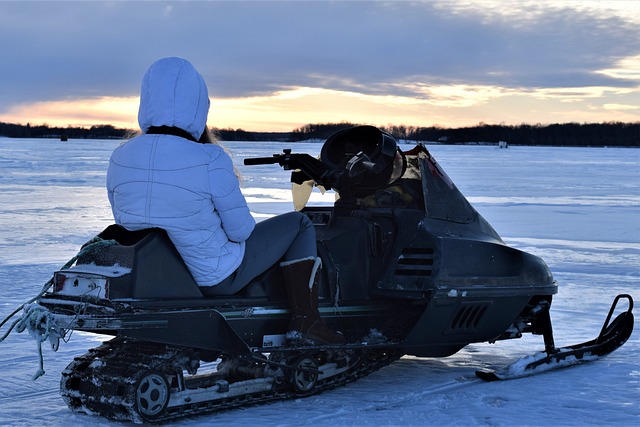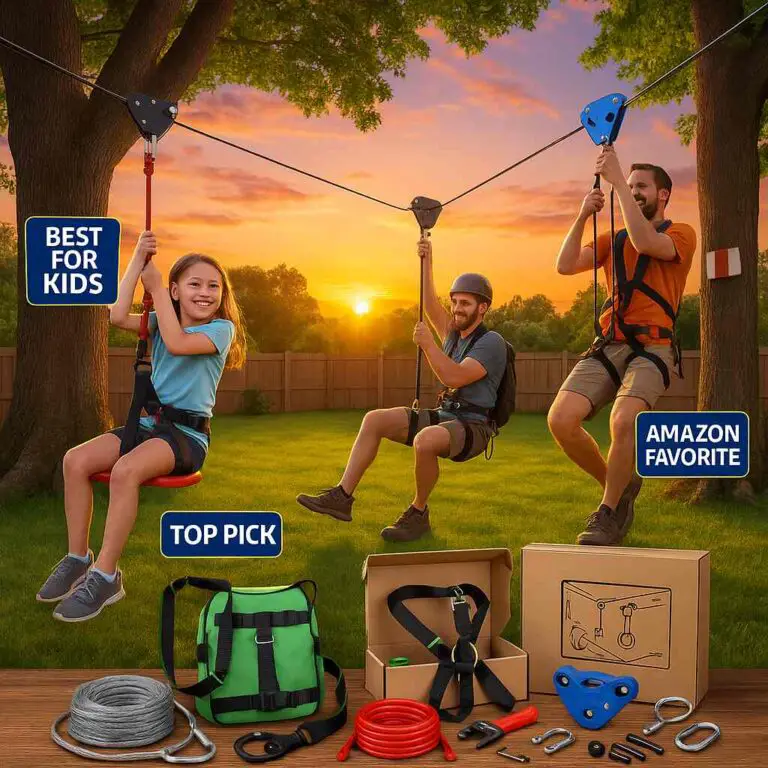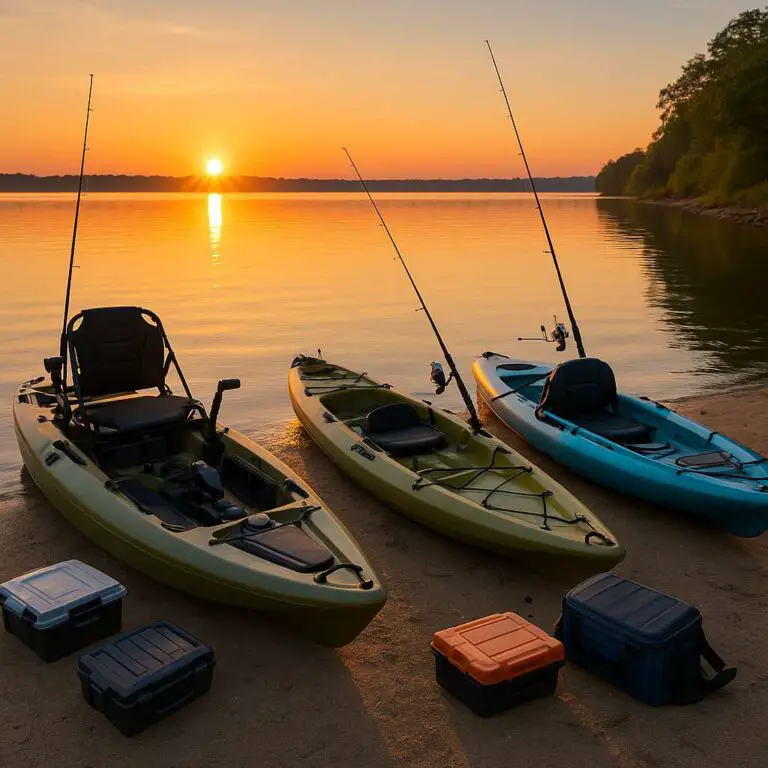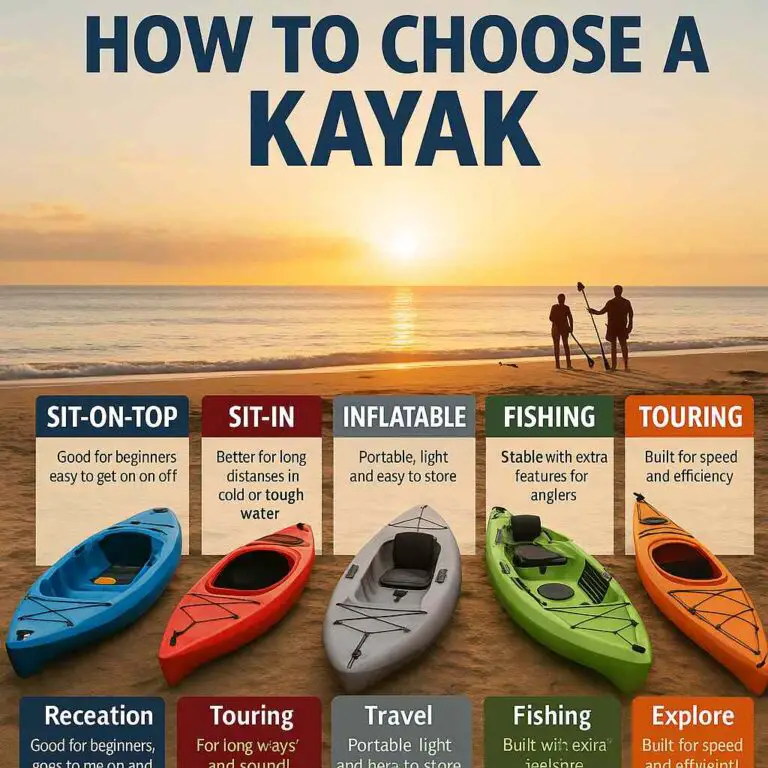Pregnancy is undoubtedly a beautiful and transformative journey, but it also comes with its fair share of questions and concerns. One of the most common queries my wife had during her pregnancy was whether it was safe to continue enjoying winter adventures like snowmobiling. we discussed this topic at length with her healthcare provider and did extensive research to ensure that her passion for snowmobiling could be balanced with the well-being of the baby. Can you really snowmobile while pregnant?
No, it is not recommended to snowmobile while pregnant due to the potential risks involved. Pregnancy is a delicate period, and snowmobiling poses various hazards, including physical impacts, vibrations, and exposure to cold weather, which can be harmful to both the expectant mother and the developing baby. The risk of falls and collisions on uneven terrain can lead to injuries or complications during pregnancy.
With that said, let’s dive into the exciting world of snowmobiling during pregnancy and discover how to make the most of this magical time while staying safe and sound in the snow!
Understanding the Risks and Benefits of Snowmobiling During Pregnancy
As thrilling as snowmobiling can be, it’s essential to weigh the potential risks and benefits before hitting the winter trails during pregnancy. Remember, safety is paramount for both you and your developing baby. Let’s explore these factors in detail:
Before planning any snowmobiling adventure, schedule a visit with your healthcare provider. They will assess your individual health status, any pre-existing medical conditions, and the overall progress of your pregnancy. This visit is crucial as your doctor can provide personalized advice and recommendations based on your specific situation.
Potential Risks Associated with Snowmobiling
- Physical Impact: Snowmobiling involves riding over rough and uneven terrain, which can result in jolts and sudden movements. During pregnancy, the body undergoes significant changes, and the added weight of the baby may affect your balance and increase the risk of injury from falls or collisions.
- Excessive Vibrations: Snowmobile engines generate vibrations that travel through the vehicle. Prolonged exposure to these vibrations may cause discomfort and potentially impact your pregnancy. It’s essential to be cautious of this aspect, especially during the later stages of pregnancy.
- Environmental Factors: Cold weather can affect blood circulation, potentially causing issues for pregnant women with circulation-related conditions. Frostbite and hypothermia are also real risks if you are not adequately dressed for the weather.
Benefits of Moderate Winter Activities for Pregnant Women
- Boosting Mood and Reducing Stress: Engaging in outdoor winter activities, including snowmobiling, can elevate your mood, reduce stress, and help you stay mentally fit during pregnancy.
- Staying Active: Moderate physical activity is generally beneficial for expectant mothers. Snowmobiling can provide a way to stay active during the winter months, promoting cardiovascular health and muscle strength.
- Connecting with Nature: Embracing the beauty of nature during snowmobiling can be a rejuvenating experience, fostering a sense of calmness and peace during your pregnancy journey.
As you evaluate the risks and benefits, it’s essential to remember that every pregnancy is unique, and what works for one woman may not be suitable for another. Striking a balance between your passion for snowmobiling and the well-being of your baby is of utmost importance.
In the next section, I’ll explore safe snowmobiling practices specifically tailored for expectant mothers, ensuring you can enjoy the winter wonderland while safeguarding yourself and your precious cargo.
Safe Snowmobiling Practices for Expectant Mothers
Now that we understand the potential risks and benefits of snowmobiling during pregnancy, let’s dive into some essential safe practices to ensure a delightful winter adventure:
Knowing When to Avoid Snowmobiling
- Listen to Your Body: Pay close attention to how you feel on a given day. If you’re experiencing any discomfort, pain, or unusual symptoms related to your pregnancy, it’s best to skip snowmobiling and rest.
- High-Risk Pregnancies: If you have a high-risk pregnancy or your healthcare provider advises against vigorous activities, it’s essential to refrain from snowmobiling for the safety of both you and your baby.
Dressing Appropriately for Winter Conditions
- Layer Up: Dress in layers to regulate your body temperature effectively. Start with a moisture-wicking base layer, add an insulating layer, and top it off with a waterproof and windproof outer layer.
- Protect Your Extremities: Don’t forget to wear warm gloves, a snug-fitting hat, and insulated footwear to keep your hands, head, and feet cozy throughout your snowmobile ride.
Choosing the Right Snowmobile and Terrain
- Ride with Caution: Opt for a well-maintained snowmobile with safety features, such as working brakes and lights. Avoid aggressive riding and high-speed maneuvers that could pose risks.
- Familiar Terrain: Stick to familiar trails that you’ve ridden before and are comfortable navigating. Avoid challenging or unfamiliar terrain, especially during pregnancy.
Essential Safety Gear for Pregnant Snowmobilers
- Well-Fitted Helmet: Invest in a DOT-approved snowmobile helmet that fits snugly on your head, providing maximum protection in case of an accident.
- Impact-Resistant Gear: Wear impact-resistant gear, such as a chest protector and elbow and knee pads, to reduce the risk of injuries from falls or collisions.
- Safety Tether: Make sure your snowmobile is equipped with a safety tether or deadman switch that automatically shuts off the engine if you become separated from the machine.
- Reflective Gear: Wear brightly colored and reflective clothing to enhance visibility, especially during low-light conditions or when riding through snow-covered landscapes.
Remember that the key to safe snowmobiling while pregnant is to take it easy, be mindful of your body’s limitations, and always prioritize safety.
Physical Preparations and Exercises for Snowmobiling Safely
Before embarking on your snowmobiling adventure, it’s essential to prepare your body for the physical demands of the activity. Here are some exercises and preparations to help you feel more confident and comfortable on the snowmobile:
Strengthening Core Muscles and Pelvic Floor
- Pelvic Tilts: Perform pelvic tilts while lying on your back with knees bent. Gently tilt your pelvis upward, engaging your core muscles, and hold for a few seconds before releasing. This exercise helps strengthen your pelvic floor and lower back.
- Kegels: Kegel exercises can be done anywhere, anytime. Contract and relax your pelvic floor muscles, aiming for three sets of ten repetitions daily. Strengthening your pelvic floor muscles can improve bladder control and support your growing belly.
Maintaining Proper Posture on a Snowmobile
- Seated Exercises: Practice sitting with a straight back and shoulders relaxed. Engage your core muscles to maintain good posture, which will help you stay comfortable and prevent backaches while snowmobiling.
- Lumbar Support: Consider using additional lumbar support while riding to reduce strain on your lower back.
Practicing Balance and Coordination Exercises
- Yoga and Pilates: Engage in gentle yoga or Pilates routines that focus on balance and stability. These exercises can improve your body awareness and coordination, making it easier to handle a snowmobile.
- Balance Board: Using a balance board can help you train your stability and strengthen leg muscles, which can come in handy while maneuvering a snowmobile on uneven terrain.
Remember, these exercises are meant to complement your snowmobiling experience, but it’s essential not to overexert yourself. Listen to your body, and if any exercise causes discomfort or pain, consult with your healthcare provider before continuing.
It’s also a good idea to practice mounting and dismounting the snowmobile in a safe environment to get accustomed to the movements. This will help you build confidence in handling the machine during your snowmobiling outings.
Tips for Reducing Discomfort and Navigating Pregnancy Symptoms While Snowmobiling
While snowmobiling can be a thrilling experience, pregnancy comes with its unique set of challenges. Here are some practical tips to help you manage common pregnancy symptoms and stay comfortable during your snowmobile rides:
Managing Morning Sickness and Nausea on the Trail
- Eat Lightly: Before heading out, opt for small, easy-to-digest meals to minimize the chances of nausea while riding.
- Stay Hydrated: Keep a water bottle with you and sip water frequently to stay hydrated and reduce the risk of dehydration-related nausea.
- Ginger or Peppermint: Consider carrying ginger candies or peppermint drops to soothe an upset stomach. These natural remedies can help ease nausea during your snowmobiling adventure.
Staying Hydrated and Nourished in Cold Weather
- Pack Nutritious Snacks: Bring along nutrient-rich snacks like granola bars, nuts, and fruits to maintain energy levels and keep hunger at bay during your ride.
- Warm Beverages: Sip on warm herbal teas or hot water with lemon to stay warm and hydrated throughout your snowmobile excursion.
- Dress Appropriately: Ensure your clothing allows easy access for snacking and drinking without compromising your comfort or safety.
Coping with Fatigue and Ensuring Adequate Rest
- Plan Shorter Rides: Consider shorter snowmobile rides to prevent fatigue and conserve energy during your pregnancy.
- Take Breaks: Schedule regular breaks during your ride to rest, stretch, and recharge. Use this time to enjoy the winter scenery and embrace the beauty of nature.
- Get Ample Sleep: Prioritize getting enough sleep the night before your snowmobiling adventure. Rest is essential for your well-being and the healthy development of your baby.
Listen to Your Body
- Don’t Push Yourself: If you experience any discomfort or fatigue during your ride, don’t hesitate to cut the trip short and head back to a warm and comfortable environment.
- Be Mindful of Warning Signs: Pay attention to any warning signs your body may give you, such as dizziness, shortness of breath, or contractions. If you experience any concerning symptoms, stop snowmobiling immediately and seek medical attention.
Communicate with Riding Companions
- Let Them Know: Inform your riding companions about your pregnancy and any specific needs or limitations you may have during the ride.
- Establish a Supportive Atmosphere: Surround yourself with understanding and supportive friends or family members who will ensure your safety and well-being while snowmobiling.
Remember that your well-being and the health of your baby should always take precedence, so take it easy, listen to your body, and savor every moment of your winter adventures.
Identifying Potential Dangers and Hazards on Snowmobile Trails
Exploring snowmobile trails can be an exhilarating experience, but it’s crucial to be aware of potential dangers and hazards to ensure your safety and that of your baby. Let’s delve into some of the key factors to watch out for while riding:
Understanding Weather and Avalanche Risks:
- Check Weather Conditions: Before heading out, thoroughly check the weather forecast for the area. Avoid snowmobiling during severe weather conditions, storms, or blizzards.
- Avalanche Awareness: Be aware of avalanche-prone areas and avoid riding in high-risk avalanche zones. Familiarize yourself with local avalanche forecasts and stay away from steep slopes and areas with recent avalanche activity.
Navigating Icy and Challenging Terrain Safely
- Reduced Traction: Be cautious of icy or packed snow surfaces, as they can reduce your snowmobile’s traction and increase the risk of skidding or loss of control.
- Slow and Steady: Reduce your speed and maintain a steady pace when traversing challenging terrains, such as steep inclines or sharp turns. Avoid sudden accelerations or abrupt braking.
Being Cautious of Wildlife Encounters
- Respect Wildlife: Be mindful of the wildlife living in the snow-covered landscapes. Keep a safe distance from animals to avoid disturbing them or putting yourself at risk.
- Wildlife Crossings: Watch for signs of wildlife crossings and be prepared to slow down or stop if you encounter animals on the trail.
Checking Trail Conditions
- Trail Closures: Check for any trail closures or restrictions in the area you plan to ride. Some trails may be closed due to weather conditions or maintenance work.
- Trail Grooming: Be aware of recent trail grooming activities. Groomed trails are generally safer and more accessible for snowmobiling.
Riding in a Group: Communication and Safety
- Stay Together: If riding in a group, maintain visual contact with fellow riders. Use hand signals or agreed-upon communication methods to stay connected while on the trail.
- Emergency Plan: Establish a clear emergency plan with your riding companions, including procedures for contacting help if needed.
Carrying Safety Essentials
- First Aid Kit: Always carry a well-stocked first aid kit that includes essential supplies for minor injuries.
- Communication Devices: Bring a fully charged cell phone or a two-way radio to communicate in case of emergencies.
- GPS and Map: Carry a GPS device or a map of the area to ensure you can navigate and find your way back to familiar trails.
Riding in a Group: Communication and Safety
Snowmobiling with a group of friends or family members can be a fantastic way to share the joy of winter adventures. Here are some essential tips for effective communication and ensuring everyone’s safety during group snowmobiling:
Stay Together and Watch Out for Each Other
- Before Setting Out: Gather everyone for a pre-ride briefing to discuss the planned route, potential hazards, and emergency procedures. Make sure everyone is familiar with the hand signals or communication methods you’ll use while on the trail.
- Lead and Sweep Riders: Designate a lead rider who knows the trail and a sweep rider who brings up the rear. The lead rider sets the pace, and the sweep rider ensures no one gets left behind.
Establish Communication Signals and Protocols
- Hand Signals: Agree on a set of hand signals to communicate messages such as “stop,” “slow down,” “turn left,” or “turn right.” These signals are especially useful when the noise of the snowmobile makes verbal communication challenging.
- Two-Way Radios: Equip each rider with two-way radios to maintain constant communication. These devices enable instant updates, sharing information, and calling for help if needed.
Maintain a Safe Following Distance
- Adequate Spacing: Encourage riders to maintain a safe distance between snowmobiles to avoid collisions and provide sufficient reaction time.
- Avoid Clustering: Refrain from riding side by side, especially in challenging terrain, as this can impede the visibility of the riders behind.
Be Mindful of Each Rider’s Skill Level
- Consider Experience Levels: Plan your route and riding style based on the least experienced rider’s abilities. Avoid overly challenging trails if there are inexperienced snowmobilers in the group.
- Regular Check-Ins: Periodically stop to check on each other’s well-being and ensure everyone is comfortable and enjoying the ride.
What to Do in Case of an Emergency
- Have an Emergency Plan: Discuss an emergency plan with your group before starting the ride. This plan should include contacting emergency services and designated contact persons in case of an accident or medical issue.
- Location Awareness: Make sure everyone knows how to provide their location in case they need assistance. Using GPS coordinates or familiar landmarks can help pinpoint the location quickly.
Respect the Environment and Local Regulations
- Follow Trail Rules: Abide by local snowmobile regulations and stay on designated trails to protect the environment and avoid fines.
- Respect Private Property: Avoid trespassing on private property and show respect for wildlife and natural habitats.
By riding in a well-coordinated group with clear communication and safety practices, you can enhance the enjoyment of your snowmobiling adventure while ensuring the well-being of everyone involved.
Alternative Winter Activities for Pregnant Women
If you prefer to explore alternative winter activities that are gentler on your body but still allow you to cherish the beauty of the season, there are plenty of delightful options to consider. Here are some wonderful winter pastimes for expectant mothers:
- Nature Walks: Embrace the serene winter landscape with leisurely nature walks. Bundle up in warm clothing, take a stroll through snow-covered trails, and breathe in the crisp winter air. Nature walks offer a peaceful way to stay active and connect with the beauty of winter without the intensity of snowmobiling.
- Snowshoeing: Snowshoeing is an excellent low-impact winter activity that provides a fantastic workout while keeping you close to nature. It’s a safe way to explore snowy terrains without the risks associated with snowmobiling. Rent or borrow a pair of snowshoes and enjoy the snowy trails at your own pace.
- Cross-Country Skiing: Cross-country skiing is another wonderful way to stay active during pregnancy. This low-impact exercise targets various muscle groups and provides an excellent cardiovascular workout. Look for cross-country skiing trails suitable for beginners, and enjoy gliding gracefully through winter wonderlands.
- Winter Photography: Capture the magic of winter through the lens of a camera. Whether you use a professional camera or your smartphone, winter photography allows you to preserve precious memories of the season’s beauty and your pregnancy journey.
- Cozy Cabin Retreat: Plan a relaxing getaway to a cozy winter cabin. Enjoy the warmth of a fireplace, indulge in hot cocoa, and simply take in the breathtaking snowy views from the comfort of your cabin retreat.
- Ice Skating: Ice skating is a fun and low-impact winter activity that you can enjoy at indoor or outdoor rinks. It’s a great way to improve balance and flexibility while having a joyful time with family and friends.
- Winter Wildlife Observation: Take this opportunity to observe winter wildlife from a safe distance. Visit local parks or nature reserves known for winter wildlife sightings, and enjoy the tranquility of observing animals in their natural habitat.
- Winter Spa Day: Treat yourself to a relaxing winter spa day. Book a prenatal massage, unwind in a warm sauna, or indulge in a soothing warm bath to relieve pregnancy-related stress and fatigue.
Remember, pregnancy is a special time, and it’s essential to choose activities that align with your comfort level and ensure your safety and that of your baby. Consult with your healthcare provider to determine which activities are best suited for your specific pregnancy journey.
Conclusion
In conclusion, the best answer to the question “Can you snowmobile while pregnant?” is that while snowmobiling during pregnancy can be possible for some expectant mothers, it comes with inherent risks and considerations. Before engaging in any winter activity, especially snowmobiling, it is crucial to consult with your healthcare provider. They can assess your individual health status, any pre-existing medical conditions, and the overall progress of your pregnancy to offer personalized advice.
During pregnancy, the body undergoes significant changes, and the added weight of the baby may affect balance and increase the risk of injury from falls or collisions. Additionally, snowmobiling can expose pregnant women to excessive vibrations and harsh environmental conditions, which may not be suitable for everyone.
However, if your healthcare provider deems it safe for you to snowmobile during pregnancy and you choose to do so, it’s vital to follow safe practices. Dress appropriately for the weather, choose familiar and well-maintained trails, and wear safety gear, including a well-fitted helmet.
For expectant mothers who prefer a more cautious approach or are looking for gentler winter activities, we have explored wonderful alternatives such as nature walks, snowshoeing, cross-country skiing, and winter wildlife observation. These activities offer a chance to stay active, connect with nature, and create beautiful memories without the intensity and risks of snowmobiling.
In all cases, the key to a safe and enjoyable winter experience while pregnant is to listen to your body, be mindful of its limitations, and prioritize safety and well-being. Each pregnancy is unique, and what works for one woman may not be suitable for another.
As you celebrate the magic of winter and the joys of pregnancy, I encourage all expectant mothers to embrace this remarkable journey and cherish the precious moments it brings. Whether you choose to ride the snowy trails or indulge in serene winter pastimes, may your winter be filled with warmth, love, and beautiful memories that will last a lifetime.
Remember, the most important thing during pregnancy is to take care of yourself and your growing baby, allowing this special time in your life to be as magical and safe as possible.
Here’s another great article to read: Skydiving While Pregnant: Is It Safe? Everything You Need To Know








